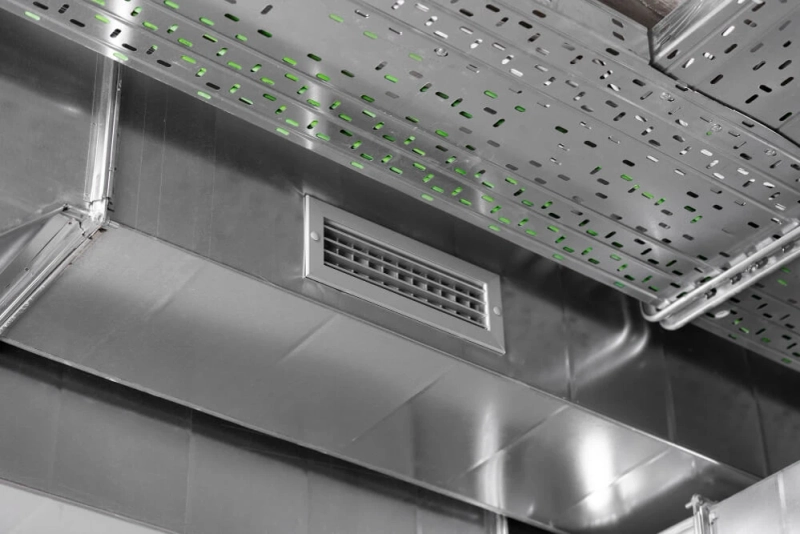Demand Control Ventilation (DCV) is a type of ventilation system. It is used to provide fresh air to a building to improve indoor air quality. It is based on the principle of providing ventilation only when it is needed. Thus, it saves energy and reducing the amount of outside air that needs to be conditioned. Demand Control Ventilation systems are typically used in commercial buildings and other large spaces where air quality is a concern.
How Does Demand Control Ventilation Systems Work?
Demand Control Ventilation systems systems use several types of sensors. The sensors detect the amount of carbon dioxide (CO2) and other air pollutants in the air. Further, they adjust the amount of air being circulated accordingly.
The sensors are typically installed in the return air ducts. They trace the CO2 and other pollutants in the air. Once the levels of these pollutants are detected, the demand control ventilation sensors adjust the amount of air being circulated, depending on the levels of pollutants. If the level of pollutants is high, the sensors will increase the amount of air being circulated. If the levels are low, the sensors will reduce the amount of air being circulated.
The sensors also use other factors to determine the amount of air being circulated, such as the number of people in the building, the temperature and humidity levels, the outdoor air quality, and the air exchange rate. All of these factors are taken into account to ensure that the building is properly ventilated and the air quality is maintained.
The demand control ventilation sensors are highly efficient. They can detect and respond to changes in the air quality quickly, ensuring that the air is always fresh and healthy. In addition, the demand control ventilation sensors are relatively low-maintenance and cost-effective, making them a great choice for businesses and homes.
Benefits of Demand Control Ventilation System
DCV systems provide numerous benefits to building owners and occupants. Firstly, they reduce energy costs by only providing ventilation when it is needed. This reduces the amount of energy required to heat and cool the air coming into the building, resulting in lower energy bills. Secondly, Demand Control Ventilation systems improve indoor air quality by providing additional ventilation when pollutant levels exceed certain thresholds.
This helps to reduce the risk of health problems associated with poor air quality, such as asthma and allergies. Finally, DCV systems can be used to reduce the amount of outside noise entering the building, providing a more comfortable environment for occupants.
Chilled Beam with Demand Control Ventilation
A chilled beam is an air-conditioning system that uses cold water to cool the air in a building. Chilled beams can be used in conjunction with a DCV system to provide additional cooling or ventilation when needed. The chilled beam works by absorbing heat from the air, which is then transferred to the cold water in the chilled beam. This helps to reduce the temperature of the air in the building, while also providing additional ventilation.
Steps to Installing Demand Controlled Ventilation Systems?
The first step in Installing Demand Controlled Ventilation Systems is to identify the spaces in the building that will require additional ventilation. This includes areas such as bathrooms, kitchens, and other high-traffic areas.The next step is to select the appropriate equipment for the job. This includes selecting the type of fan needed, the necessary ductwork, and any additional components such as air filters or air fresheners.
Once the equipment is selected, the next step is to install the ductwork. This should be done by a professional, as improper installation can lead to a decrease in efficiency or even a fire hazard.
The next step in installing demand controlled ventilation systems is to install the fan and connect it to the ductwork. This is best done by a professional, as improper installation can also lead to a decrease in efficiency or even a fire hazard.
Finally, the last step is to program the demand-controlled ventilation system. This will involve setting the fan speeds, temperature settings, and other parameters to ensure that the system is working properly.
Conclusion
Demand Control Ventilation systems are an effective and energy-efficient way to improve indoor air quality in commercial buildings and other large spaces. They use sensors to detect contaminants in the air and provide additional ventilation when needed.
Additionally, chilled beam with demand control ventilation provides additional cooling and ventilation. Installing a DCV system requires the expertise of a qualified HVAC professional. The system must be tested and adjusted to ensure that it is working correctly.


